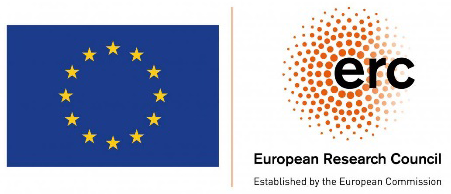
Dear colleagues,
We would like to draw your attention on the session on induced/triggered seismicity at the vEGU21: Gather Online (19-30 April 2021).
In this session, we would like to discuss the processes leading to induced/triggered seismicity, in order to facilitate the development of reliable forecasting methodologies in geo-energy applications.
Given the complexity of induced seismicity processes, we encourage interdisciplinary contributions, based on laboratory, underground near-fault experiments, and real cases, covering both theoretical
and experimental aspects of induced and triggered seismicity at multiple spatial and temporal scales.
For more details on our session and to submit an abstract, please click:![]() https://meetingorganizer.copernicus.org/EGU2021/session/38738
https://meetingorganizer.copernicus.org/EGU2021/session/38738
The abstract submission deadline is 13 January 2021, 13:00 CET.
We encourage you to submit your abstracts to our session!
Best regards and apologies for multiple posting,
Antonio Pio Rinaldi, Rebecca Harrington, Marco Scuderi, Victor Vilarrasa
ERE6.1/EMRP1/SM6
Induced/triggered seismicity in geo-energy applications: monitoring, modeling, mitigation, and forecasting
Convener: Antonio Pio Rinaldi
Co-conveners: Rebecca Harrington, Marco Maria Scuderi, Victor Vilarrasa
Numerous cases of induced/triggered seismicity resulting either directly or indirectly from injection/extraction associated with anthropogenic activity related to geo-resources exploration have been reported in the last decades. Induced earthquakes felt by the general public can often negatively affect public perception of geo-energies and may lead to the cancellation of important projects. Furthermore, large earthquakes may jeopardize wellbore stability and damage surface infrastructure. Thus, monitoring and modeling processes leading to fault slip, either seismic or aseismic, are critical to developing effective and reliable forecasting methodologies during deep underground exploitation. The complex interaction between injected fluids, subsurface geology, stress interactions, and resulting fault slip requires an interdisciplinary approach to understand the triggering mechanisms, and may require taking coupled thermo-hydro-mechanical-chemical processes into account.
In this session, we invite contributions from research aimed at investigating the interaction of the above processes during exploitation of underground resources, including hydrocarbon extraction, wastewater disposal, geothermal energy exploitation, hydraulic fracturing, gas storage and production, mining, and reservoir impoundment for hydro-energy. We particularly encourage novel contributions based on laboratory and underground near-fault experiments, numerical modeling, the spatio-temporal relationship between seismic properties, injection/extraction parameters, and/or geology, and fieldwork. Contributions covering both theoretical and experimental aspects of induced and triggered seismicity at multiple spatial and temporal scales are welcome.

